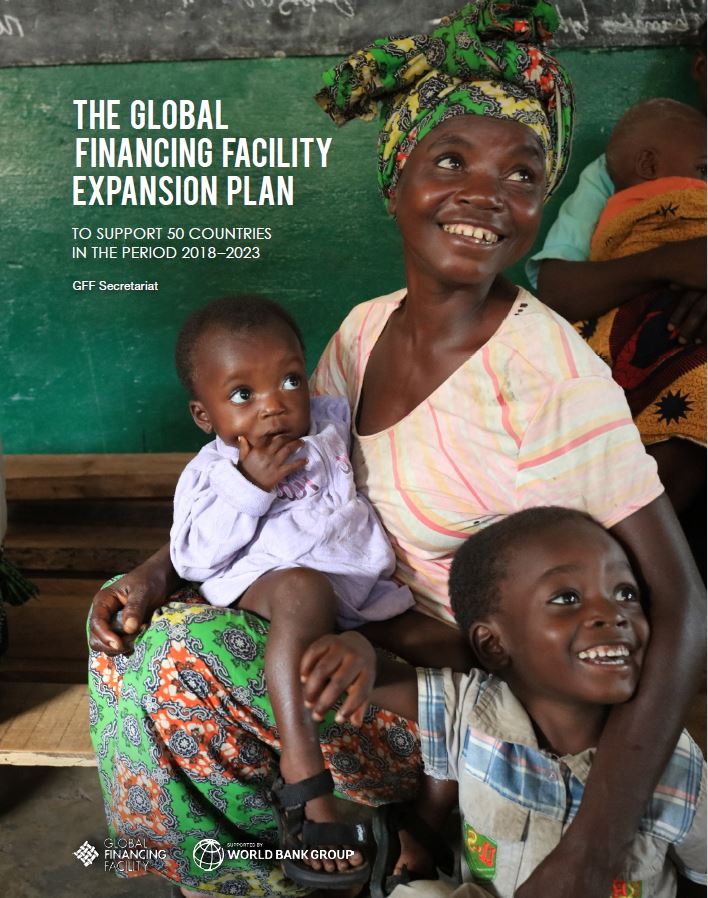Global Financing Facility Expansion Plan to Support 50 Countries in the Period 2018-2023
The aim of the Global Financing Facility (GFF) replenishment is to raise an additional US$2 billion for the GFF Trust Fund for 2018–23 to support the 50 countries with the highest maternal, newborn, and child mortality burdens and funding needs and to enable them to accelerate progress on universal health care (UHC) in support of the health- and nutrition-related Sustainable Development Goals (SDGs).
To do so, the GFF Secretariat has developed an expansion strategy for the GFF over the period 2018-23. This approach is based on an analysis of the main lessons learned to date from implementing the GFFand includes feedback from a range of stakeholders.
This paper is not meant to present a comprehensive evaluation of the GFF model; such an evaluation will be carried out once countries have accumulated sufficient experience in implementing the GFF approach. This strategy document
is part of the replenishment package and complements and draws on other documents, including the impact modeling of the GFF1 and the 2017–18 Annual Report with early results and case studies, launched in July 2018.
The strategy paper outlines the changes that the GFF is undertaking to adjust some aspects of the GFF model based on country experiences and partner feedback. Going forward, the GFF model will be refined in the following ways, with more:
- Use of innovative financing mechanisms,
- Support of the universal health coverage (UHC) agenda,
- Deliberate multisector engagement to maximize the health benefits of all key sectors,
- Engagement of the GFF partnership at national and global levels,
- Focus on domestic resource mobilization,
- Adjustment of the country-level theory of change to country characteristics, and
- Systematic implementation and monitoring at the country level.
The following stages are envisaged:
- Initial 16 countries. Provide as needed, follow-up grants in the sectors where the GFF is already invested and provide targeted grants to other core sectors (e.g., governance, social protection, education) to maximize the contributions of relevant sectors to reach the required health and nutrition results at scale. Considerable opportunities exist over the next 12–24 months for this type of expansion and gap filling, especially with the focus on human capital, to take initial results from the first three years to scale.
- 11 countries developing Investment Cases. In many of these countries, it is anticipated that GFF cofinancing would be provided to more sectors than just the health sector from the start. Additional resources for subsequent support, which would be covered through the replenishment, are required to provide a second grant and, in a few cases, a third grant. 23 additional countries.
- New countries will be added to the GFF portfolio at the following pace:
- by March 2019: 11 new countries;
- by March 2020: 12 new countries.
To ensure all 50 countries receive adequate support, the GFF Secretariat will continue to build on the existing business model with its close operational link with the World Bank and an increased effort to leverage the capacity of partners in GFF countries.
